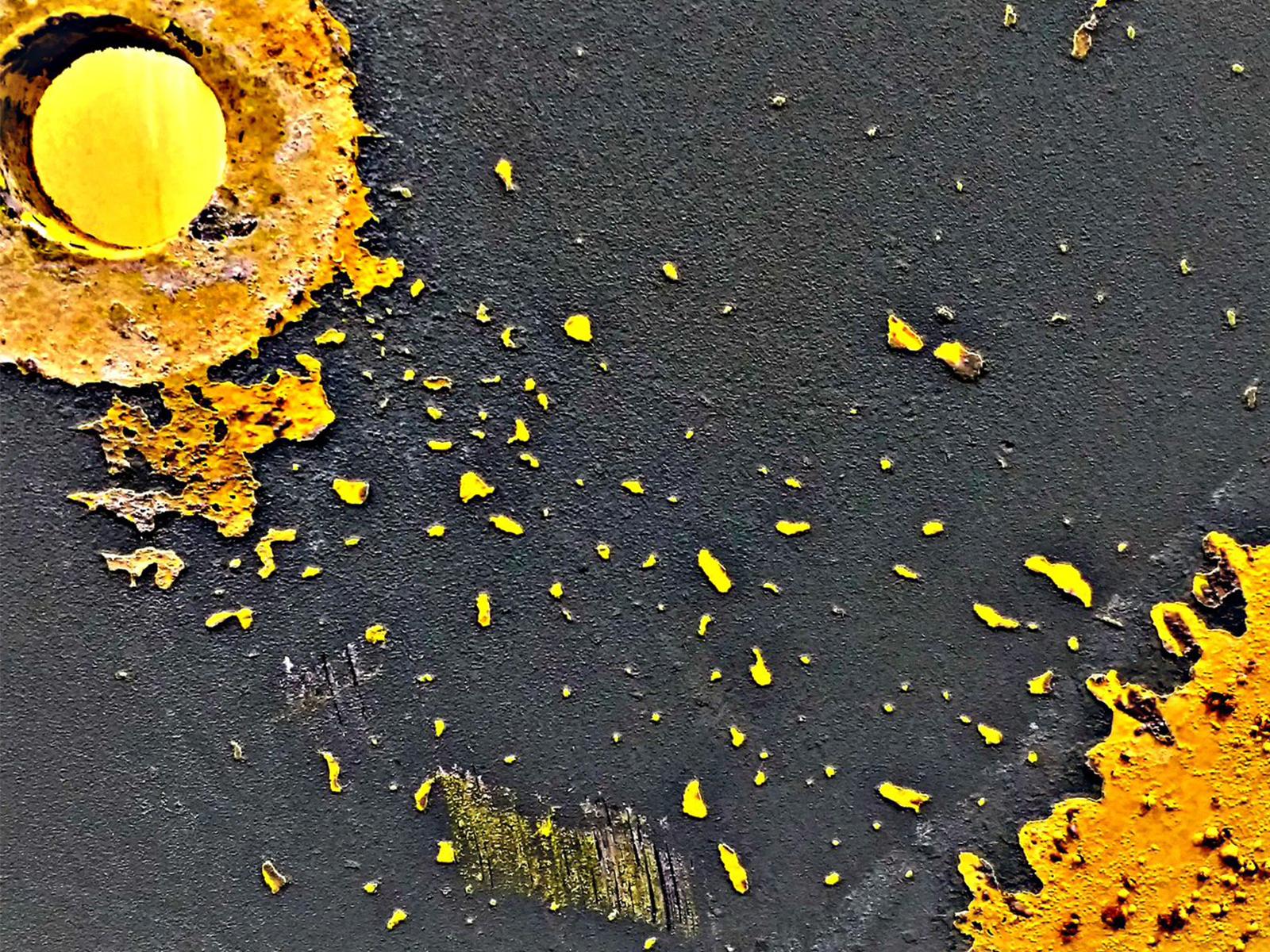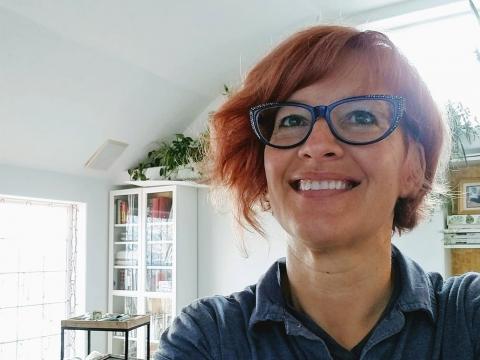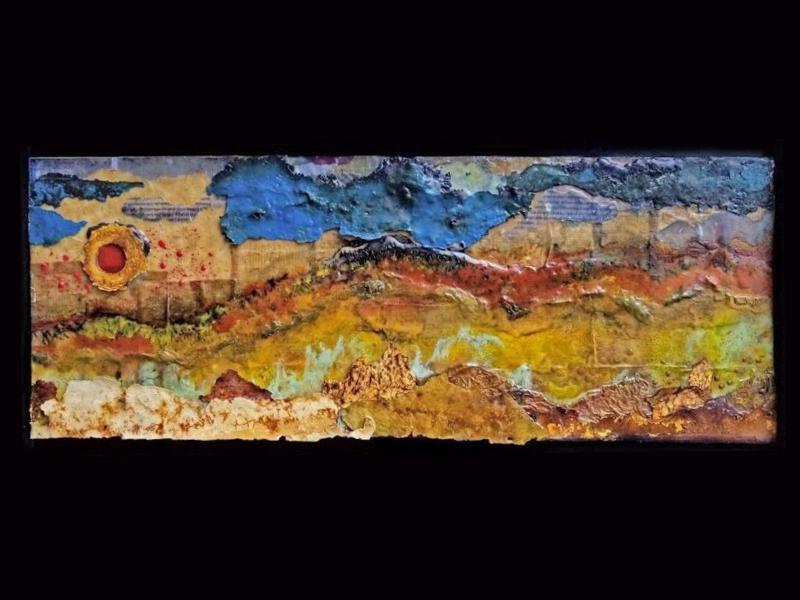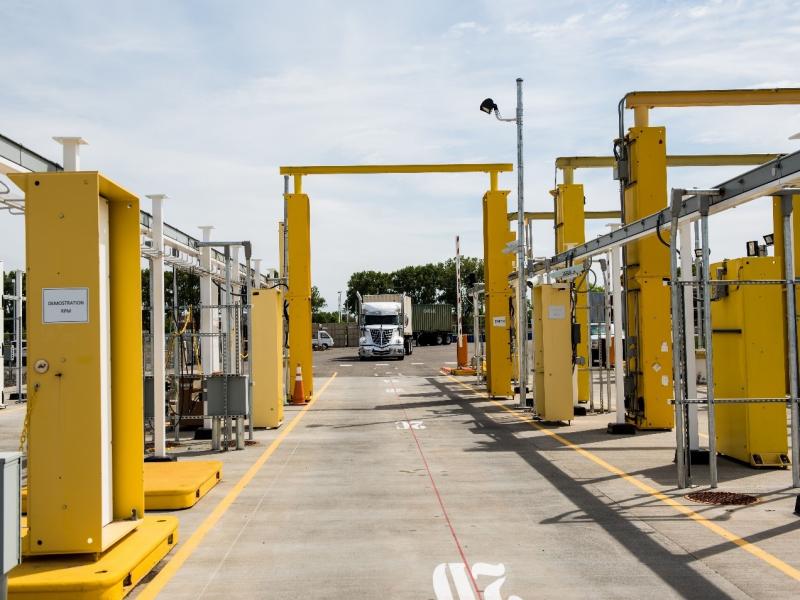Unexpected Art
PNNL employee transforms remnants of decommissioned RPM shells into art

Brenda Wiesner integrates rusty bolts and peeling yellow paint from decommissioned RPM shells into her artwork and photography.
(Photo by Brenda Wiesner | Pacific Northwest National Laboratory)

The remnants of the decommissioned radiation portal monitors (RPMs) that sit idly in a Pacific Northwest National Laboratory (PNNL) warehouse may appear to most people as nothing more than scraps of rusty metal. But when Brenda Wiesner looks at the worn safety-yellow shell of a decommissioned RPM, she sees art.
“There is some lovely natural chemistry art on RPMs—especially those that have been at the ports where the salty air, paint, and oxidative process have created some really interesting visuals” said Wiesner, a PNNL national security specialist. “It’s cool to think that nature made this; it’s weirdly artistic.”
Wiesner is a radiological source custodian and part of PNNL’s Radiation Portal Monitor Project, which deploys RPM systems at ports of entry along U.S. borders to scan entering vehicles and cargo for radioactive materials. When RPMs are decommissioned due to port reconfigurations or lack of use, the radiation detection devices are shipped back to PNNL for refurbishment, testing, and storage until they can be deployed again.
An artist's vision

A few years ago, Wiesner began to turn an artist’s eye toward the decommissioned RPM shells. First, she took photographs of unusual patterns formed by the oxidized and peeling paint. She then started integrating the scraps into her one-of-a-kind encaustic artwork, which she creates using a technique mixing paraffin with resin and other materials—such as peeling paint and rusty pieces from worn RPM equipment.
“I gravitate toward patterns, colors, and how everything goes together. I just thought this is a really interesting medium to put into some art,” she said. “It’s a material that’s so unique. Where else are you going to find something like that?”

Technically trained but creative at heart, Wiesner doesn’t consider herself artistic; she simply appreciates the chemical reactions and unexpected beauty that occur when paint and metal are exposed to nature’s elements. Wiesner said her art not only gives old RPM paint new life, but each piece also tells a story.
“The way the colors go together—the blues, yellows, pinks— it just feels like the southern border,” said Wiesner, referring to an encaustic piece (see photo) she created with paint chips from a decommissioned RPM that had once been in service at the border between the U.S. and Mexico. “The sun, the salt, the air, the exhaust from the traffic—everything that was at the border while that portal monitor was there, it’s now in that art piece.”
Published: April 6, 2021